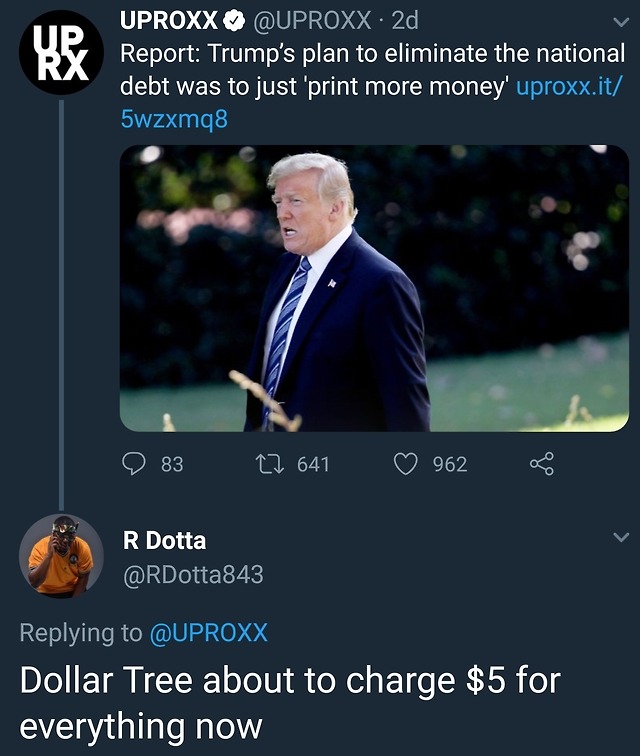
Okay, here’s an article about explaining inflation through comics, aiming for around 1200 words. I’ve tried to make it engaging and informative, suitable for a general audience, while keeping the comic-based approach central.
Comics to the Rescue: Explaining Inflation in a Visual World
Inflation. The word alone can conjure images of rising prices, shrinking paychecks, and a general sense of economic unease. It’s a complex concept that economists debate endlessly, yet its impact is felt by everyone, from the student buying ramen to the retiree on a fixed income. But what if we could make this complex topic more accessible, more engaging, and, dare we say, even fun? Enter: comics.
Comics, often dismissed as mere entertainment, are a powerful medium for communication. Their combination of visuals and text allows for nuanced storytelling, complex ideas to be simplified, and abstract concepts to be grounded in relatable scenarios. When it comes to explaining inflation, comics offer a unique advantage, cutting through jargon and bringing the economic realities to life in a way that textbooks simply can’t.
Why Comics Work: The Power of Visual Storytelling
Before diving into how comics can explain inflation, it’s crucial to understand why they are so effective. Several factors contribute to their persuasive power:
- Accessibility: Visuals are inherently more accessible than dense blocks of text. Comics break down complex information into bite-sized chunks, making them easier to digest and remember. A well-placed panel can convey more than a paragraph of explanation.
- Relatability: Comics allow for the creation of relatable characters and scenarios. By placing the concept of inflation within the context of everyday life, readers can connect with the material on a personal level. Seeing a character struggle to afford groceries due to rising prices is far more impactful than simply reading about inflation rates.
- Engagement: The combination of visuals and text creates a more engaging experience than either medium alone. The sequential art form draws the reader in, encouraging them to actively participate in the storytelling process. This active engagement leads to better comprehension and retention.
- Simplification: Comics can simplify complex concepts without dumbing them down. Through careful use of imagery, metaphors, and concise text, they can distill intricate ideas into their essential elements. This is particularly useful when explaining abstract economic principles like inflation.
Illustrating Inflation: Key Concepts Explained Through Panels
So, how can comics specifically tackle the topic of inflation? Here are a few examples of how key concepts can be illustrated through the medium:
-
The Definition of Inflation: Instead of a dry definition, a comic could show a character going to a store in year 1 and buying a loaf of bread for $1. The next panel shows the same character returning to the same store in year 2, only to find the same loaf of bread now costs $1.25. A thought bubble above their head could read, "Inflation! Prices are going up!" This simple visual effectively conveys the core concept of rising prices.
-
Demand-Pull Inflation: This type of inflation occurs when there is too much money chasing too few goods. A comic could depict a bustling marketplace where everyone is eagerly trying to buy the same limited number of apples. Speech bubbles could show people bidding up the price, driving inflation. The key visual is the excess demand exceeding the available supply.
-
Cost-Push Inflation: This happens when the costs of production increase, leading to higher prices for consumers. A comic could show a factory owner struggling to pay rising costs for raw materials (e.g., steel, energy). He then reluctantly raises the price of his products to cover those costs. The visual should emphasize the rising costs of inputs pushing up the final price.
-
The Quantity Theory of Money: This theory states that inflation is caused by an increase in the money supply. A comic could show a printing press churning out stacks of money. As the money supply increases, the value of each individual dollar decreases, leading to inflation. The visual contrast between the abundance of money and the devaluing effect is crucial.
-
The Impact on Purchasing Power: This is perhaps the most relatable aspect of inflation. A comic could show a character with a fixed income (e.g., a retiree) struggling to afford basic necessities as prices rise. Their purchasing power is being eroded by inflation, even though their income remains the same. The visual of a shrinking grocery basket is a powerful symbol.
-
Hyperinflation: This is an extreme form of inflation where prices rise rapidly and uncontrollably. A comic could depict a chaotic scene with prices changing hourly, people rushing to spend their money before it becomes worthless, and businesses struggling to stay afloat. The visual should convey a sense of panic and economic instability.
Examples of Comic-Based Educational Initiatives
The potential of comics for economic education is increasingly being recognized. Several initiatives have already explored this avenue:
- Government and Central Bank Outreach: Some central banks have started using comics and graphic novels to explain monetary policy and financial concepts to the public. These comics often feature relatable characters and engaging storylines, making complex topics more accessible to a wider audience.
- Educational Websites and Blogs: Many websites and blogs dedicated to economics and finance now incorporate comic strips and illustrations to explain key concepts. These visuals help to break up long articles and make the information more digestible.
- Classroom Integration: Educators are increasingly using comics as supplementary materials in economics classes. Comics can help to engage students who might otherwise be intimidated by the subject matter.
- Financial Literacy Programs: Comics are also being used in financial literacy programs to teach people about budgeting, saving, and investing. The visual format makes these topics more approachable and less daunting.
Creating Your Own Inflation Comic: A Step-by-Step Guide
Want to try your hand at explaining inflation through comics? Here’s a simple guide:
- Choose a Specific Aspect of Inflation: Don’t try to cover everything at once. Focus on one key concept, such as demand-pull inflation or the impact on purchasing power.
- Develop a Relatable Scenario: Create a scenario that resonates with your target audience. Think about everyday situations where inflation might have a noticeable impact.
- Design Your Characters: Create characters that your audience can identify with. Give them distinct personalities and motivations.
- Plan Your Panels: Sketch out the panels you want to include in your comic. Think about how each panel will contribute to the overall story.
- Write Concise and Clear Dialogue: Use simple language and avoid jargon. Focus on conveying the essential information in a clear and engaging way.
- Use Visuals to Enhance Your Message: Choose visuals that reinforce your message and make the information more memorable.
- Get Feedback: Share your comic with others and ask for feedback. Use their comments to improve your work.
The Future of Economic Education: A Comic Book World?
While comics may not replace traditional textbooks entirely, they offer a valuable tool for economic education. By combining visuals, storytelling, and simplified explanations, comics can make complex concepts more accessible, engaging, and memorable. As the world becomes increasingly visual, the power of comics to educate and inform should not be underestimated. From explaining inflation to demystifying monetary policy, comics have the potential to revolutionize the way we learn about economics and finance. The future of economic education may very well be a comic book world. It’s time to pick up a pen, a tablet, or even just a piece of paper, and start drawing a better understanding of the economy.



